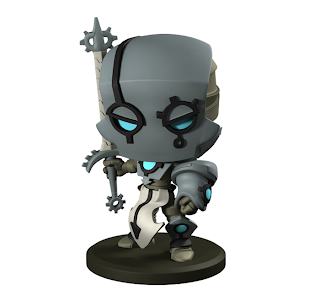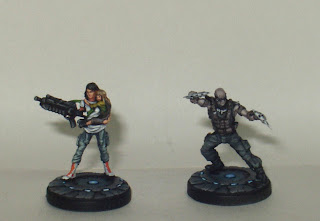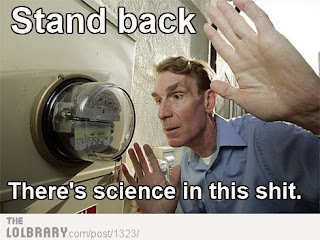Not like I need it but this is my license to post ponies. I
have just returned from the MLP CCG pre release event. It was fabulous. I got
all kinds of fun swag but the best part was my wife went with me and definitely
did better than me (though not in her card pulls).
CCGs usually aren’t my thing, I like nice thick cardboard
that is predictable when bought, non of this blind bag stuff. Why did I get
into this game then? Because friendship is F*&^ing Magic.
Anyway hot off the presses I shall be recounting the tales
of playing with the ponies. And by that I mean I shall give you the low down of
the rules and show of my shiny ultra rare Big Macintosh card!
So lets start with the basics. How do I win at friendship?
Well you generally solve problems until someone reaches 15 points (Not 14!).
But watch out, those nare do wells the trouble-makers are poised to stand in
your way!
Anyway you build a deck. If I recall correctly it was at
least 45 cards worth of deck, then you get 10 problems together (why do I feel
like Twighlight in Lesson Zero when I do this?). You also cant have more than
three cards of any one type in your deck and no more than 2 of any problem.
After that you find an opponent, which may be easier than
you think judging by the turnout at my game store (I'm always up for a Skype game). After that you say a few
nice words to each other and begin (Be social! Say appropriate things and help
each other out when need be! We are Bronies and Pegasisters not Yu! GI! Oh! kids)
So first you put your Mane character ( I see what they did
there) next to your draw deck. Your problem deck goes on your upper right. You
must go through the problem deck before starting and pick one of your start
problems to get things rolling. This card is placed face up on your problem deck.
This is the basic board layout. I got this nice paper mat at the event!
Your Mane character is very important. She starts the game
in play at home. She also has a condition on her where she can become Boosted
(20% cooler!). This is really important because it lets you have more ponies at
home and gives you more pony power in an easy way!
Rarity is shown on her start side. Rainbow dash is on her Boosted side.
The pony power is in the upper right.
What does home mean? Are you too good for your home? Well
some ponies are. See you can have a number of ponies in your home space that
is equal to what your Mane character gives you. If you ever exceed this (such
as when ponies return from solving a problem) you must dismiss them (discard).
Sorry Dashy, I have HAD it with you breaking windows in my library.
Turns are broken down into:
The ready phase
The trouble maker phase
The Main phase (mane? Why not!)
And finally the score phase.
Ready phase:
This is easy, you draw a card and make ready all your
exhausted cards (untapp your tapped cards, they can’t say that though because
MTG has copyrighted that phrase (Tapped means turned sideways, and untapped
means placing them in a normal way).
And finally get your actions tokens.
You get a number of action tokens based on THE HIGHEST SCORE
of both players. So if you have three points and your opponent has 10 points,
you both get 4 action tokens. If you have 4 points and your opponent has 4
points you both get 3 action tokens. There is a happy little chart and handy
little cards to keep track of both scores and who gets what.
This is the "slider" that is mentioned. It is simply
two cards on top of each other. The left column is your score
and the right is how many AP each person gets if your score is the highest.
Just move it up and down as needed.
If you don’t use all your action points in one phase, they
will carry over into the next turn or you can use them for events. Ya, I am
gonna let that sink in a little. AP carry over. BOOM. Deal with it.
Trouble maker phase:
This one is tricky! So first I am going to talk about
trouble makers. These little devils get played for 1 AP (action points) and are
played face down during the Mane phase. On your next turn they will get flipped over during the trouble maker phase and will try to
prevent your opponent from confronting a problem on their next turn. This
is also the phase where you get to choose if you want to confront them for being
jerks. If you do there is a Faceoff. I will get into this later.
His power is in the upper right, and the points you
get for defeating him are in the middle portion....
Stupid tribble.
If you win the faceoff trouble maker is discarded and you score the
points the trouble maker is worth located in the middle left of the card.
If the trouble maker wins the face off, one pony at the
problem becomes exhausted (turned sideways).
Exhausted ponies cannot add their pony power towards solving
problems of face offs!
Trouble makers are played on problems. If those problems go away, they do too (unless they are still face down).
Mane phase:
This is where you play cards and move ponies places. You
play a card by paying its cost ( located on the left side inside a white
circle) in Action points. In addition to the AP cost you must have the
resources required for the card in play. This number is located bellow the cost
circle. You can play ponies onto problems or onto your home space. You can also
play events if those events say Main Phase on them.
Her cost is in the left bubble (3) and you must have 2 kindness out
(bellow the cost) to play her.
If you play a resource that resource is generally played
onto something. These are like equipment and do not go away until the card they
are played on goes away, or your opponent forces you to dismiss them (discard).
If you want to move a pony from your home to a problem or
from one problem to another you must pay 2 action points. Gotta trot over to
that big ol problem and get er done. Some ponies have a cool ability called
swift which lets them do it for 1 AP.
Events are played when they say they can be played. They
will tell you what phase to play them in.
You can also play trouble makers for 1 AP. These go on your opponents side of a problem. Your opponent cannot confront the problem that trouble maker is at ( as long as he is flipped up) until the trouble maker is defeated in a face off.
Easy!
Score phase:
This is Button’s Mom’s favorite phase. No. That was wrong.
This is the phase where you score points. Here you look at
both problems and see if you have enough ponies at that problem to confront it.
If you do, and you are the first to confront the problem, you score 1 point for
confronting the problem plus whatever amount of bonus points there are at that
problem. If you are not the first to confront it you just get one point. You cannot confront a problem if a trouble maker is present on your side.
Your opponent needs 8 of any pony power to solve this problem.
You need 4 honesty and 3 non honesty.
You then looks across the problem to see if there are any
other ponies over there ready to throw down with two years of tap and 3 of Jazz
dance.
The problems stay in play until there is a face off at the
problems. This can happen in one of two ways: A single face off or a double.
Single:
Here one person confronts the problem and scores a point but on the opponents side, they also have enough pony power to solve the
problem. When this is the case both you and your opponent flip the top card
from your decks. You take the power of that card (top Right number) and add it
to your pony power (the power value of each pony found at the problem). The
winner gets to score points equal to the bonus points of that problem. The
problem is then discarded and a new one is flipped.
Here you have a face off. On one side you have 6 loyalty pony power,
and on the other you have 8 pony power (we are ignoring that awesome owl who should
go in EVERY deck). You will add the power of the card you flip to both totals to see who wins.
ALL CARDS FLIPPED DUE TO FACE OFFS GO ONTO THE BOTTOM OF
YOUR DECK AFTERWARDS. I WILL NOT TELL YOU AGAIN.
A word about problems:
A problem has two sides. The side with a number containing
no element of harmony faces your opponent while the other side faces you. You
each must meet your given power requirement in order to confront that problem.
A problem will stay in play –allowing points to generate from it – until there
is a face off.
Double face off!
Here is where it gets complicated. A double face off happens
if someone scores points from both problems. This can be a DEVESTATING turn of
events. This will even happen if there are no ponies on the other side. If this
happens do the following:
1: Do not panic!
2: Grab your towel!
3: Add up the pony power on each side of the problems. One
for you and one for your opponent.
4: Flip the top card of your deck while your opponent does
the same.
5: Add the power of that card (again top right) to your pony
power total.
6: Highest number wins the face off. Redraw on ties.
The winner gets bonus points equal to the highest bonus
point number of either of the two problems. (not both bonus points). So if
there is one problem with 3 bonus points and one with 1, the winner gets three
points for winning the face off.
7: All ponies go home and a new problem is flipped onto both
decks.
When doing this trouble makers are ignored. Remember though,
this only happens if someone scores points from BOTH your problem and your
opponents.
So here is the thing about this whole score phase.
You get points for these things in this order:
Confronting the problem: 1 point
Being the first to confront the problem: Bonus point value
Winning a face off: Bonus points value.
These points can add up real face. I thought I was going to
win one game then my opponent scored 8 points… A poor friend of mine had a 10
point score on him!
Ya that's pretty much the look on my face.
Ok so I think that is the gist of things, if not all of it.
It’s not so bad once you get going and play a few games. Having played with a
few of the decks and messed with some of them I can tell you the permutations
are vast. Lots of viable options here Mr. Sirlin. Not a lot of OP either, with the exception of Rarity's fabulous hat, most things are balanced pretty well.
This thing, oh my Celestia this thing...Who knew a hat
could be so powerful. Just be glad she didn't make a whole dress.
Lots of fun too, which surprised me. The card game is non
violent and really echos what the show and comic books try to do ( personally I
think the comics are better than the show!). Here we have a rare beast. A
Cartoon to CCG that comes with depth of play, fun and aesthetics. This game
will appeal to many generations and if you’re a Brony like me, it’s a must
play.
My only wish is that it wasn’t collectable. But at least I
got my Big Mac. Now if I can only track down a Vinyl Scratch and Derpy….
Yeeup, your jealous.
Anyway, Until next time; I am Brony, resistance is futile.
AZ



































